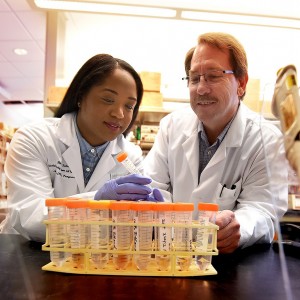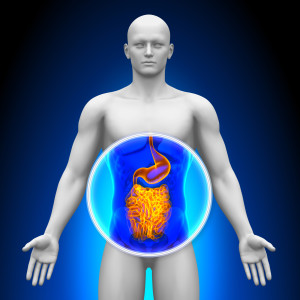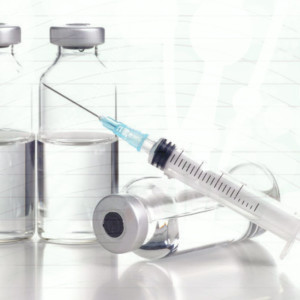
A small, daily dose of Viagra may reduce colorectal cancer risk – an article by ScienceDaily can be accessed here.
Comments from Dr. Rosenberg on the Article:
Over the last decade, researchers have elucidated the roles that impairment of cGMP signaling pathway by PDE5 activity inhibition plays in the regulation of tumor development, and progression.
PDE5 inhibition could be associated with a decreased risk of human cancer development and suppression of tumor progression in several malignancies including those of the lung, prostate, breast and colon. PDE5 inhibitors may also provide an additional anti-tumor immune response in patients affected by myeloma and head and neck squamous cell carcinomas. In addition, a synergistic effect with current chemotherapeutic regimens and monoclonal antibodies has been reported.
Although it likely will not cause harm to use PDE5 inhibitors as both a cancer preventative, as well as an adjunct to existing therapies, some questions need to be answered:
1. Which are the most effective class of PDE5 inhibitors against cancer?
2. Within each class, which drug(s) is the most effective?
3. Optimal dosage?
healthyliving December 20th, 2018
Posted In: cancer care, Cancer Prevention, Healthy Lifestyle
Tags: cancer, cancer prevention, colorectal cancer, prevention, viagra

The data linking the gut microbiome continues to accumulate. In addition, the link between an animal-based diet (meat intake) and increased cancer incidence continues to strengthen. Besides
the toxins, hormones, and sulfides associated with the intake of meat, meat contains high amounts of methionine, which has been associated with cancer proliferation.
For further reading, read the following article by Amy Wallace, which appeared in United Press International and references a study published in the journal Gut.
healthyliving September 7th, 2017
Posted In: Cancer Prevention
Tags: cancer, cancer prevention, Methionine

The Dana Farber Cancer Institute recently published an article titled, Some Head and Neck Cancer Patients Benefit From Continued Checkpoint Inhibitor Treatment after Tumor Growth.
You can read the full article here.
Response Evaluation Criteria In Solid Tumors (RECIST) is a set of published rules that define when tumors in cancer patients improve (“respond”), stay the same (“stabilize”), or worsen (“progress”) during treatment. The criteria were published in February 2000 by an international collaboration including the European Organization for Research and Treatment of Cancer (EORTC), National Cancer Institute of the United States, and the National Cancer Institute of Canada Clinical Trials Group.
Today, the majority of clinical trials evaluating cancer treatments for objective response in solid tumors use RECIST. These criteria were developed and published in February 2000, and subsequently updated in 2009. This article clearly shows that these criteria cannot be used to determine the efficacy of immunotherapy. It is not uncommon for scans, as well as the clinical picture, to worsen, with immunotherapy, before we see improvement.
Bottom line: Do not decide whether the patient should stop immunotherapy, based on the CT scan or PET scan. If the patient is doing reasonably well clinically, and is able to continue immunotherapy, continuation of therapy should be considered.
~ Dr. Rosenberg
healthyliving August 29th, 2017
Posted In: Cancer Prevention
Tags: cancer, cancer prevention, Response Evaluation Criteria

Cancer patients can work to understand and make healthy lifestyle decisions during their treatment. Adaptive and integrative cancer care practices have long advocated for integrating healthy choices about things like exercise and diet into a patient’s lifestyle.
The American Cancer Society recently shared this article by Elizabeth Mendez. The findings show that exercise may in fact, make tumors less aggressive and more likely to respond to treatment.
You can access that article here. It’s a good read for anyone faced with a cancer diagnosis, or working with cancer patients.
healthyliving May 16th, 2017
Posted In: cancer care, Cancer Prevention
Tags: cancer, cancer care, cancer prevention
Throughout the history of cancer research, in both the conventional and alternative cancer research realms, there has been a cause and effect relationship that has been largely ignored. The ability of a cell to divide, whether it be a malignant or non-malignant cell, is dependent on cell volume, as well as membrane potential. As you will learn, there is also a relationship between cell volume and membrane potential.
Cells that are cycling (dividing), progress through the following phases: G1 (Gap 1) – this is the
phase where the cell is preparing for the next phase, which is the S phase, or DNA Synthesis phase. Once DNA synthesis is complete, the cell enters the G2 phase (G 2), where it prepares to enter the final phase, called the M phase, or mitosis. During mitosis, the cell divides into 2 cells. The cell volume is at its smallest at G1, and gradually increases its volume until it reaches its largest volume in the M phase. This should be intuitive, because the cell must become large enough to divide and then support two cells.
Throughout the cell cycle, the cell is constantly monitoring the volume. If the cell does not reach the desired volumes, the cell will be unable to progress to the next phase. There is a G1/S transition “checkpoint,” which commonly causes the cell to arrest at this intermediate stage, if adequate volume is not reached. When a cell is arrested due to inadequate volume, there are two possible ensuing events: either the cell will leave the cycle and enter G0, and become a dormant, non-cycling cell, or the cell will be recognized as non-viable, and undergo mitochondrial-induced programmed cell death (apoptosis).
Interestingly, cell volume correlates with cell membrane electrical potential. Cells that are rapidly dividing are in the “depolarized” state; meaning they have less negatively charged particles in the intra-cellular space relative to the extra-cellular space. Cells that are not able to divide are “hyperpolarized;” meaning they have much greater amounts of negatively charged particles in the intra-cellular space relative to the extra-cellular space. Bottom line: Rapidly dividing cells have large volume and are depolarized, while non-dividing cells have small volume and are hyperpolarized.
healthyliving May 3rd, 2017
Posted In: Cancer Prevention
Tags: cancer, cancer care, cancer prevention, cell volume

A plethora of data exists regarding the benefits of calorie restriction. Calorie restriction has been shown to increase healthspan and lifespan in all species studied. Interestingly, calorie restriction, or intermittent fasting, has been shown to be beneficial to cancer patients undergoing chemotherapy; https://news.usc.edu/103972/fasting-like-diet-turns-the-immune-system-against-cancer/
A study led by Valter Longo, was published in the journal Cancer Cell on July 11, days after BMC Cancer published a separate study showing that a pilot trial of the three-day, fasting-like diet was “safe and feasible” for 18 cancer patients on chemotherapy. The mouse study on skin and breast cancers is the first study to show that a diet that mimics fasting may activate the immune system and expose the cancer cells to the immune system,” Longo said. The two studies’ findings build upon prior research that showed a short-term fast starves cancer cells and facilitates the chemo drug therapies to better target the cancer.
Another more recent study showed that a low-calorie, fasting-mimicking diet can slow multiple sclerosis by killing off bad cells and generating new healthy ones. The results of this latest mouse study are striking since chemotherapy’s side effects include immunosuppression. The researchers found that the fasting-mimicking diet, when used with chemotherapy drugs, raises the levels of bone marrow cells that generate immune system cells, such as T cells, B cells and “natural killer” cells that infiltrate tumors.
In the mouse study, scientists saw another significant effect of the diet: the “T regulatory” cells which protect the cancer cells were expelled. They also found three cycles of the fasting diet, combined with doxorubicin, prompted a 33 percent increase in the levels of cancer-fighting white blood cells and doubled the number of progenitor cells in the bone marrow. The cancer-killing cells were also more effective at attacking and shrinking the tumors. The research team also found that 72 hours of fasting, in patients undergoing chemotherapy, is associated with lower side effects, compared with fasting for 24 hours. This raises the possibility that a doctor-monitored, fasting-like diet could bolster the effectiveness of immunotherapy on a wider range of cancers.
You can access this study here.
~ Dr. Rosenberg
healthyliving May 2nd, 2017
Posted In: Cancer Prevention
Tags: calorie restriction, cancer, cancer prevention, fasting

Source Credit: This article was originally released by the the European Society for Medical Oncology in December, 2016.
A brain-boosting protein plays an important role in how well people respond to chemotherapy, researchers report at the ESMO Asia 2016 Congress in Singapore.
A study has found that cancer patients suffering depression have decreased amounts of brain-derived neurotophic factor (BDNF) in their blood. Low levels make people less responsive to cancer drugs and less tolerant of their side-effects.
Lead author Yufeng Wu, head of oncology, department of internal medicine, Affiliated Cancer Hospital of Zhengzhou University, Henan Cancer Hospital, Zhengzhou, China, said: “It’s crucial doctors pay more attention to the mood and emotional state of patients. “Depression can reduce the effects of chemotherapy and BDNF plays an important role in this process.”
Low mood is common among cancer patients, especially the terminally ill. BDNF is essential for healthy brain function and low levels have already been linked with mental illness. This study aimed to discover how depression influenced outcomes for people with advanced lung cancer.
Researchers recruited 186 newly diagnosed patients receiving chemotherapy. To assess their state of mind, they were asked to rate their depression levels the day before treatment began. Quality of life details, overall survival and other data were also collected. This allowed researchers to compare this information with the patients’ mood scores.
Results showed that those whose cancer had spread to other organs were the most depressed and this severely decreased their tolerance to chemotherapy. It was associated with vomiting, a reduction in white blood cells, and prolonged hospital stays. The impact of severe depression was even greater. It reduced the length of time that patients lived with the disease without it getting worse.
Researchers found that BDNF clearly boosted the number of tumour cells killed by chemotherapy. Patients with severe depression had lower levels of the protein in the blood so their bodies were not as effective at fighting cancer. This reduced their chance of surviving the disease.
“Our aim now is to prescribe drugs such as fluoxetine to depressed patients and study their sensitivity to chemotherapy,” added Wu. Commenting on the results of the research, Ravindran Kanesvaran, consultant medical oncologist and assistant professor, Duke-NUS Medical School, Singapore, said: “The link between depression and poor outcomes among these patients is significant and can be associated with the downregulation of brain derived neurotrophic factor.
“This finding can perhaps lead to new ways to treat depression in these patients which in turn may prolong their lives. Further research is needed to establish the effects of different anti-depressant drugs on BDNF levels.”
healthyliving March 29th, 2017
Posted In: cancer care, Healthy Lifestyle
Tags: cancer, chemotherapy, depression, depression and cancer

Most conventional oncologists will tell you that there is no data to support the concept that alkalizing inhibits cancer proliferation. But the truth is… the data exists.
Let’s begin by understanding how acid is produced by cancer cells. Many cancer cells prefer to utilize glucose for energy through a process called glycolysis. Glycolysis allows the cells to generate ATP (energy) quickly; in addition, avoiding the use of the mitochondria to generate energy, makes the cancer cells less susceptible to mitochondrial-induced apoptosis (programmed cell death). Cancer cells that rely on glycolysis tend to be more resistant, more aggressive, and more likely to be metastatic.
When glucose is processed through glycolysis, the end product is lactic acid. As cancer cells feed by influxing glucose intracellularly, and process the glucose to make ATP, their waste product, lactic acid, must be excreted. If they were to be unable to excrete the acid in a timely fashion, they would, of course, die from acidity. Cancer cells therefore quickly evolve by upregulating multiple mechanisms that allow them to efflux the lactic acid from the intracellular space, into the extracellular milieu.
So what happens outside the tumor, as lactic acid accumulates? Lactic acid promotes cancer aggressiveness through the following mechanisms:
1. Stimulates the release of matrix metalloproteinases (enzymes that degrade extracellular matrix), allowing cancer cells to “dig in.”
2. Stimulates release of cancer growth factors.
3. Stimulates angiogenesis (development of new blood vessels for further cancer growth).
4. Lactic acid directly inhibits T cells from attacking the cancer.
So… if we alkalize the acidic extracellular milieu, can we decrease the aggressiveness of the cancer? Is there any data to support this?
Bicarbonate Increases Tumor pH and Inhibits Spontaneous Metastases; Ian F. Robey, Brenda K. Baggett, Nathaniel D. Kirkpatrick, Denise J. Roe, Julie Dosescu, Bonnie F. Sloane, Arig Ibrahim Hashim, David L. Morse, Natarajan Raghunand, Robert A. Gatenby, and Robert J. Gillies; Cancer Res. 2009 Mar 15; 69(6): 2260–2268.
This study showed that oral NaHCO3 (baking soda) selectively increased the pH of tumors and reduced the formation of spontaneous metastases in mouse models of metastatic breast cancer. NaHCO3 therapy also reduced the rate of lymph node involvement and significantly reduced the formation of hepatic metastases.
Human Clinical Trials
1. Extended Use of Sodium Bicarbonate in Patients with Cancer (all malignancies included); Sponsor: University of Arizona. This pilot phase I trial studied the safety of long-term use of sodium bicarbonate in patients with cancer. The experimental arm used a dose of sodium bicarbonate of 0.5 grams/kg/day. This study has been completed with results not yet posted.
2. Bicarbonate for Tumor Related Pain; Sponsor: H. Lee Moffitt Cancer Center and Research Institute. This trial was to determine if sodium bicarbonate can reduce cancer-related pain, by decreasing the acidity around tumors. This Pilot Supportive Care study ended prematurely due to slow accrual and the initiating principal investigator leaving the institution.
In Conclusion
We await phase I data from the only completed human clinical trial, treating cancer with sodium bicarbonate. The animal data, as well as the science, is extremely compelling. Individuals treating cancer through alkalization should keep in mind that high doses of sodium bicarbonate seem to be necessary; drinking alkaline water likely has a minimal effect on the pH of the cancer extracellular milieu. In addition, those that attempt to self-treat with high dose sodium bicarbonate should be monitored by a physician.
healthyliving March 22nd, 2017
Posted In: cancer care
Tags: alkalizing, angiogenesis, cancer, glycolosis